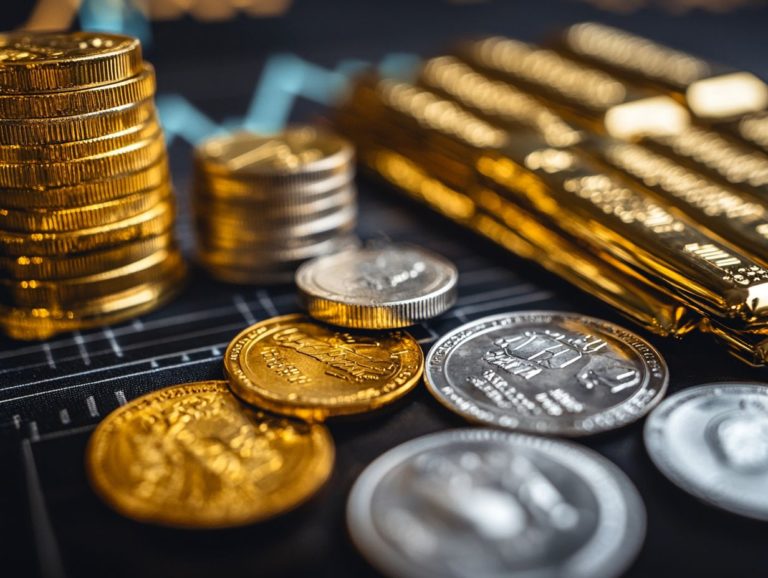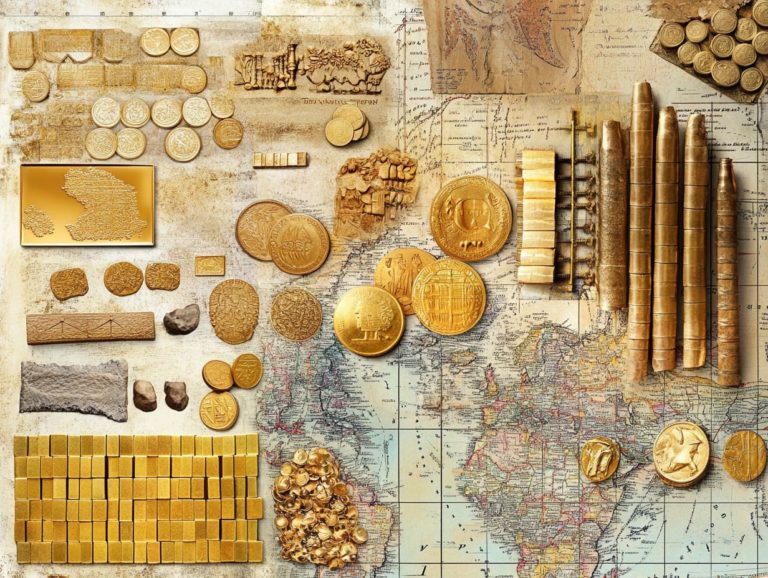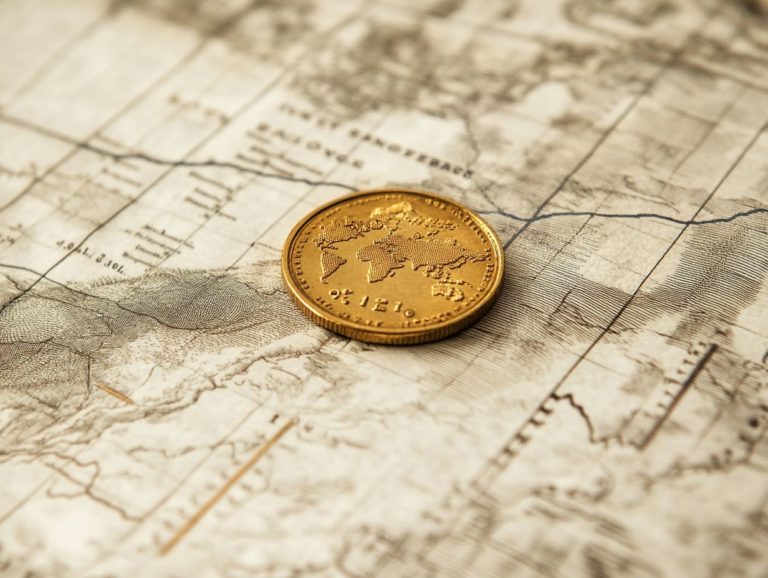What is the Significance of Gold and Silver in Culture?
Gold and silver have always occupied a distinctive niche in human history. They represent wealth, power, and beauty across diverse cultures and eras.
Their journey began with early applications as currency and adornment. Over time, they evolved into deeper meanings within art and religion. These precious metals continue to influence societies in significant ways today.
This exploration delves into their rich cultural significance, artistic portrayals, and economic roles. We will also examine their relevance in contemporary life.
Join us in exploring the exciting legacy of gold and silver that continues to shape our world.
Contents
Key Takeaways:
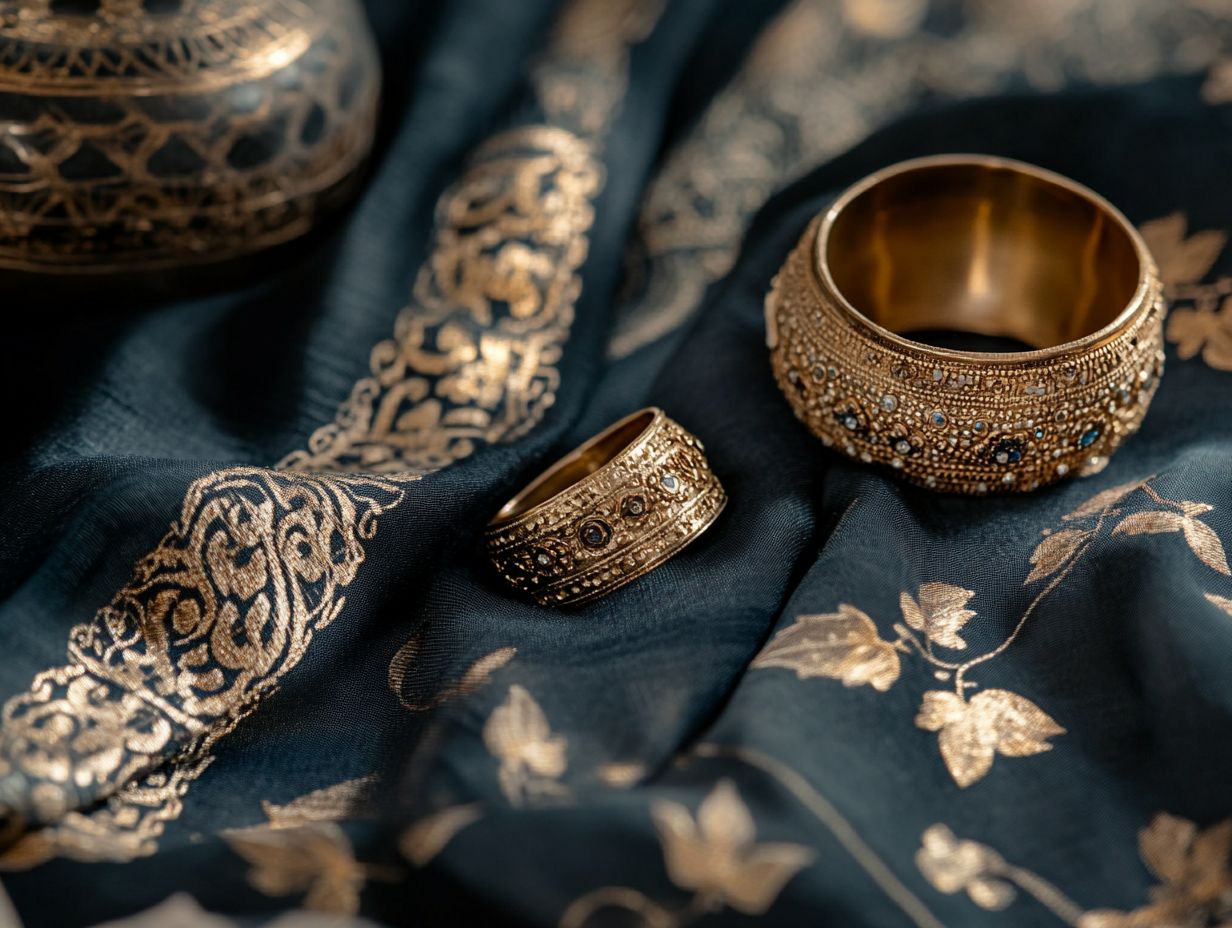
- Gold and silver have a rich history in culture, dating back to early civilizations and evolving in significance over time.
- These precious metals hold deep symbolism and meanings in various cultures, representing wealth, purity, and divinity.
- Beyond symbolic value, gold and silver also play a significant role in economic systems, as seen in their use in trade and commerce.
History of Gold and Silver in Culture
The history of gold and silver in culture is intricately woven into the narratives of ancient civilizations. These precious metals transcended mere value; they became representations of divine nature, symbols of royalty and immortality, and essential components of ceremonies that hold special meaning that linked diverse cultures across continents.
Consider the exquisite gold jewelry of Ancient Egypt, crafted to honor deities like Ra and Tutankhamun. The deep reverence for silver in the Inca civilization also showcases this significance. These metals have profoundly influenced cultural identity and artistic expression throughout the ages, enriching the tapestry of human experience.
Early Uses and Meanings
In ancient times, gold and silver were revered not just for their dazzling beauty but also for their profound spiritual significance. These precious metals were integral to ritual practices and served as early currency in exchanges.
Imagine the role they played in various cultural ceremonies, often linked to divinity and the afterlife. Artisans skillfully created intricate jewelry and ceremonial objects, showcasing both status and artistry.
As civilizations progressed, the allure of gold and silver evolved into something more practical for commerce. These metals enabled seamless currency exchange among traders and communities.
Their rarity made them the perfect choice for establishing value, birthing a new economic paradigm that highlighted their importance beyond mere aesthetics. Thus, these metals became woven into the fabric of daily life, influencing social structures and economic practices in ways that still resonate today.
Evolution of Cultural Significance
Over the centuries, the cultural significance of precious metals like gold and silver has transformed dramatically. These shifts show how different cultures valued gold and silver over time.
In ancient Egypt, gold was seen as a direct link to the divine, symbolizing the sun god Ra. It was intricately woven into the artistic expressions found in tombs and jewelry. Similarly, in Mesoamerican cultures, gold and silver embodied rich cultural traditions and were believed to harness energies that linked people to the cosmos.
Artisans crafted exquisite pieces, showing their deep respect for these valuable metals. As history progressed, the value of these precious metals evolved, influenced by trade, conquests, and changing philosophies, continually shaping their essential role in society.
Symbolism of Gold and Silver

The symbolism of gold and silver goes beyond mere aesthetics. These precious metals embody profound meanings that resonate with concepts of royalty and immortality.
Their significance enriches a multitude of cultural narratives and spiritual practices, weaving a tapestry of meaning across civilizations throughout history.
Meanings and Representations
Gold and silver have graced various forms of art and culture, serving not only as exquisite materials for jewelry but also as vital symbols of cultural identity and spiritual practices.
These precious metals are intricately woven into the tapestry of many societies, embodying notions of wealth, power, and purity. You might find intricate gold jewelry adorning individuals during significant life events, or silver artifacts playing a pivotal role in religious rituals, showcasing their importance beyond mere aesthetics.
In numerous cultures, gold is revered as a divine metal, believed to capture the essence of the sun. Silver often represents the moon and femininity. As artists craft sculptures, paintings, and decorative pieces infused with these metals, they celebrate not just their beauty but also the profound narratives of heritage, tradition, and belief systems that shape cultural identities.
Cultural Uses of Gold and Silver
The cultural significance of gold and silver encompasses a wide array of practices. These precious metals have been crafted into exquisite jewelry that not only adorns but also symbolizes wealth and status.
They also play key roles in ceremonial activities rooted in ancient traditions, embodying the values and beliefs of civilizations across history.
In Art, Religion, and Other Practices
Gold and silver have long held significant roles in artistic expression and religious artifacts, often regarded as vessels of healing properties and divine blessings across various cultures.
These precious metals symbolize not just wealth and status, but also serve as mediums for artists to convey deeper spiritual narratives and cultural identities. When creating religious artifacts, one can notice how artisans carefully incorporate gold and silver for their brilliance and durability, ensuring these items embody both aesthetic beauty and a sense of the sacred. To understand the significance of gold in this context, exploring the history of gold investment can provide valuable insights.
Many traditions attribute unique healing properties to these metals, using them in rituals designed to enhance well-being. By harnessing their elemental qualities, communities have woven together physical artistry and spiritual practice, fostering a profound connection between art, belief, and health.
Economic Importance of Gold and Silver
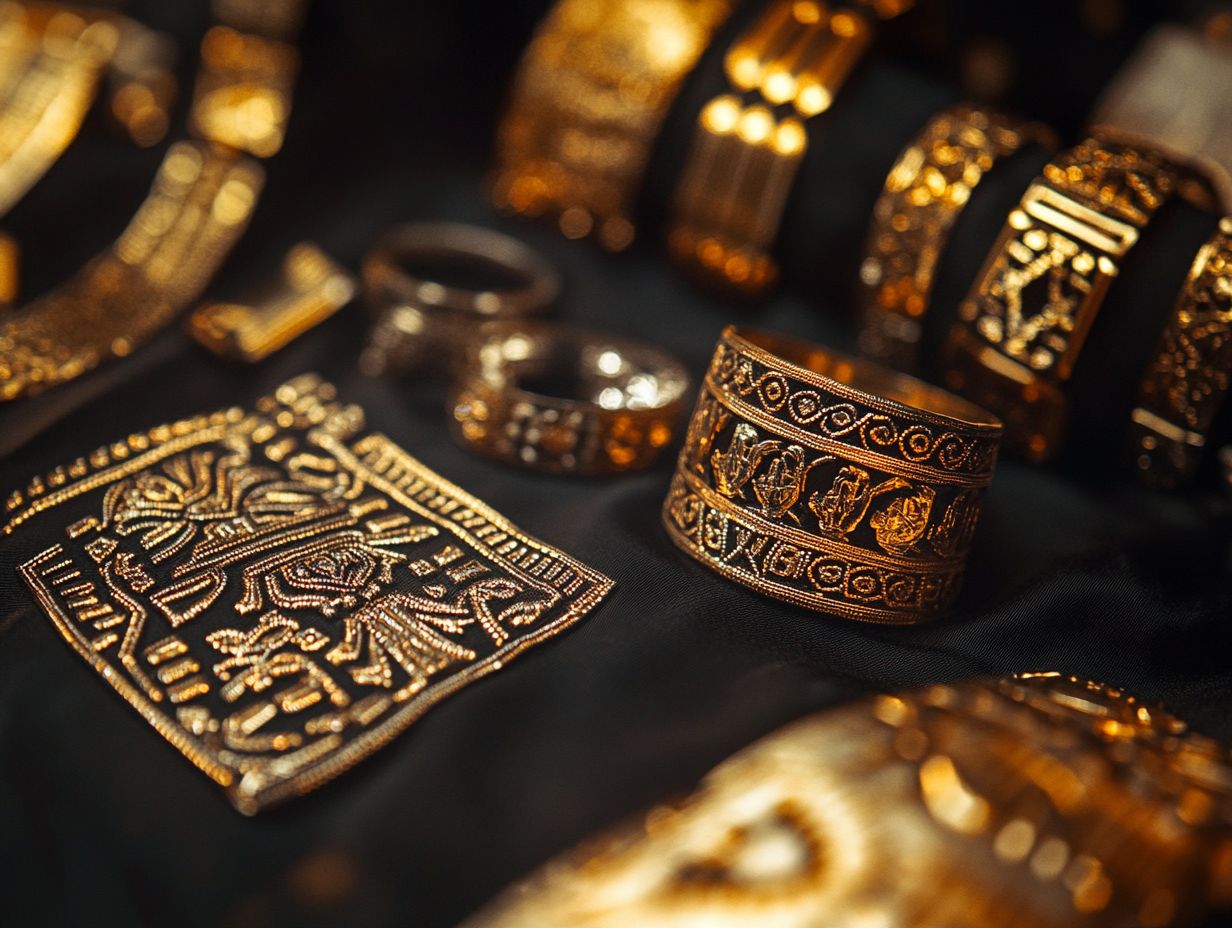
The financial importance of gold and silver has been acknowledged for centuries. These precious metals have served as fundamental components in currency exchange and trade, playing a pivotal role in shaping economies and financial systems across diverse cultures and regions.
Role in Trade and Commerce
Throughout history, gold and silver have played pivotal roles in trade and commerce, serving as dependable mediums of exchange and ensuring stability within various economic systems around the world.
These precious metals have not only functioned as currency but have also represented measures of wealth and value, affecting trade routes and shaping economic policies. In ancient civilizations, like the Roman Empire and the kingdoms of Africa, gold and silver were critical in brokering trade agreements and fostering trust among merchants. Their intrinsic value has endured through the ages, providing safe havens during times of economic uncertainty.
Today, even as the financial landscape transforms with the rise of digital currencies, the significance of gold and silver persists, underpinning the intricacies of international commerce and investment strategies.
Contemporary Perspectives on Gold and Silver
Today, gold and silver continue to captivate us! They are cherished not just for their economic value but also for their significant roles in contemporary culture, fashion, and artistic expression.
Relevance in Modern Culture
Gold and silver are very relevant today. They influence trends and art, from fashion to major events.
These metals symbolize wealth and luxury. Artists use them to create innovative works that reflect our values.
In contemporary fashion, designs often showcase gold and silver tones, reflecting a desire for glamour and elegance while making bold statements.
Cultural trends frequently incorporate these metals into jewelry and accessories. They act as powerful symbols of identity and heritage.
As artists explore how light and texture work together, gold and silver become essential to their creative stories, bridging traditional craftsmanship and modern art.
Frequently Asked Questions
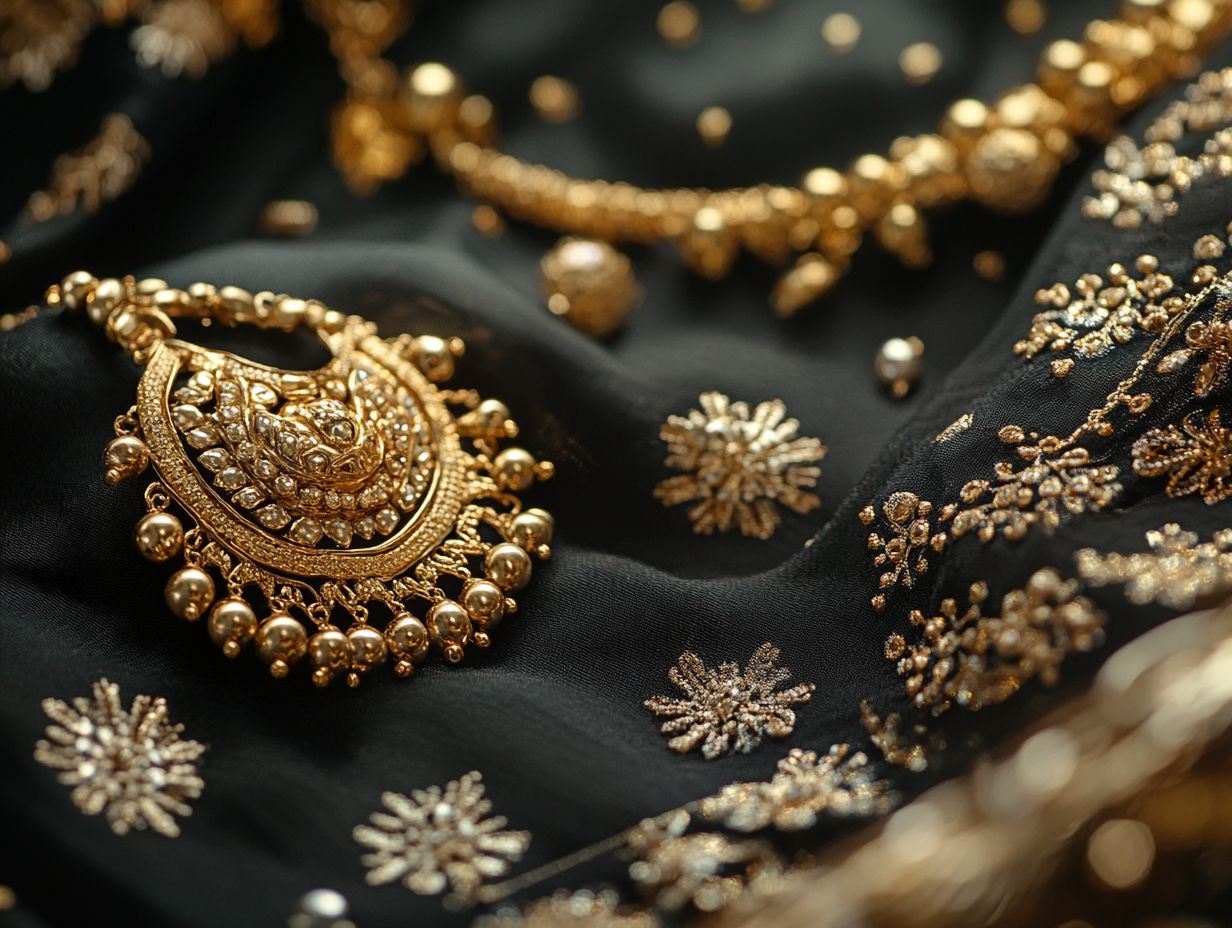
What is the Significance of Gold in Culture?
Gold has symbolized wealth and prosperity in many cultures throughout history. It is often linked to royalty and has been used as currency.
What is the Significance of Silver in Culture?
Silver is highly valued in various cultures, often seen as a sign of purity. It is commonly used in religious ceremonies and as currency.
How are Gold and Silver Used in Cultural Traditions?
Gold and silver are prominent in cultural traditions, found in jewelry, decorative objects, and religious artifacts. They also feature in traditional clothing and accessories.
What Cultural Beliefs are Associated with Gold and Silver?
Many cultures believe gold and silver possess spiritual or healing properties. They are often regarded as symbols of luck, protection, and prosperity.
Why are Gold and Silver Popular in Fashion?
Gold and silver have long been favored in fashion due to their luxurious and glamorous appeal. They add elegance and sophistication to any outfit.
What is the Future of Gold and Silver in Culture?
As society and technology evolve, the significance of gold and silver may shift. However, these precious metals are deeply rooted in many traditions and will likely remain valued for years to come.
We invite you to share your thoughts or experiences related to gold and silver in the comments below!











